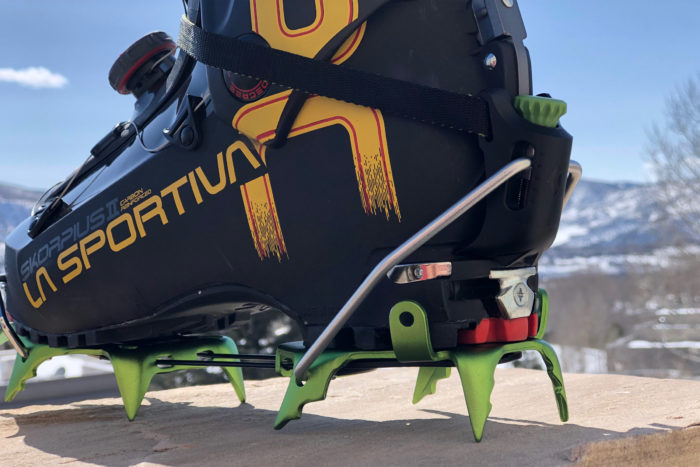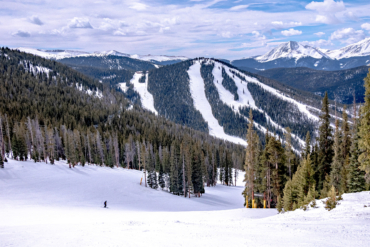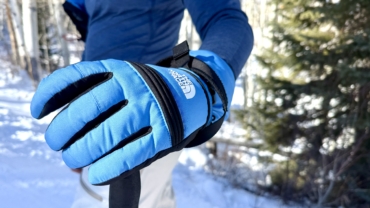I looked down the north face of the southern Sawatch 14er as I waited for my partners to catch up. It had been a long day already, yet the snow was just starting to soften in the morning light. Given the long approach, my partners had passed on packing their heavy steel crampons and thus were relegated to rocky scrambling to the summit.
My trusty Neve Pros — the old version — allowed me to take the direct line up the hardened couloir with a minimum weight penalty. They were so light that I always brought them along for days like this.
That’s why I was thrilled when the new Neve Pros came out. They got the lighter-and-faster treatment for 2023, just in time for spring mountaineering season. The update is more than just a weight reduction, though. They’ve been completely overhauled from snout to bail.
In short: Black Diamond found a way to slash the weight of their lightest crampon. The result is the new Neve Pro, designed for ski mountaineers and light-and-fast mountain athletes climbing steep snow, couloirs, and the occasional patch of ice. Their enhanced packability means they’re easy to carry inside a backpack, so there’s barely a penalty for bringing them along, just in case.
- Material: Aluminum alloy
- Binding system: Fully automatic
- Size range: One size fits 36-46
- Weight per pair: 394 g (13.9 oz.)
- Storage pouch included:
Pros
- Ultra lightweight
- Foldable, compact
- Aluminum-alloy spikes
Cons
- Only compatible with mountaineering boots
- Slight flex underfoot when on toes
Black Diamond Neve Pro Crampon Review
There are a lot of different ways to build crampons. For starters, the material matters a lot. Crampons come in either steel, aluminum, or a mix of the two.
Steel crampons are super durable — you can walk around on rocks and hard glacier ice all day without issue. They’re also very heavy. Aluminum crampons are significantly lighter — half the weight in some cases. But rocks dull and bend aluminum teeth quickly.
Then you’ve got your hybrids. These utilize a steel front section for climbing and an aluminum rear section for weight savings.
Aluminum crampons are designed to excel at climbing snow and névé (compacted snow that’s not quite ice). That’s where the Neve Pro thrives. They are not designed to tackle full-on mountaineering missions, ice, or mixed climbing. Those endeavors require steel.
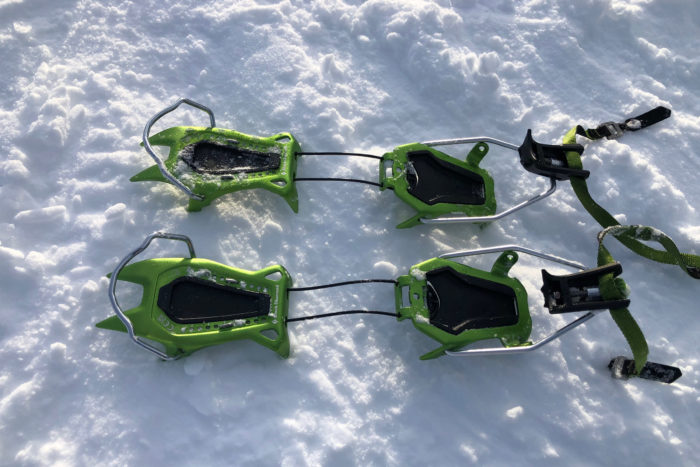
A second key category is the binding system. Crampons come in three varieties — fully automatic requiring a boot with toe and heel welts; semi-automatic, which requires at least heel welts; and strap-on, which can attach to most mountain footwear.
The new Neve Pro crampon comes exclusively in the fully-automatic configuration. So they’re only compatible with ski touring boots and mountaineering boots with both toe and heel welts like the La Sportiva G5. They are not compatible with hiking boots or trail runners.
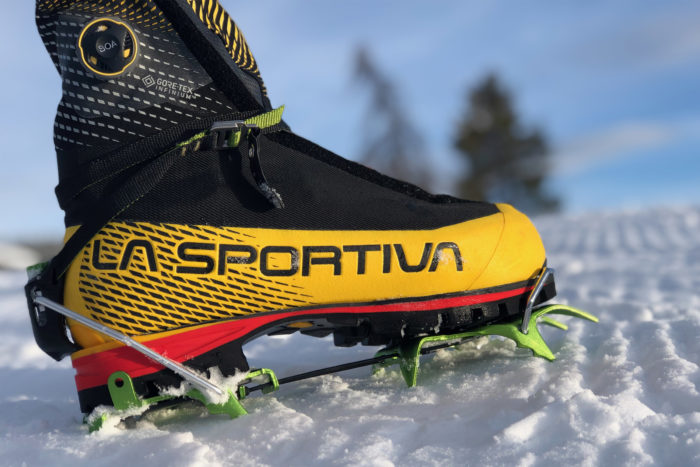
Updates
The most obvious design change compared to the previous Neve’s is the switch away from a center bar. That has been the standard connection between toe and heel pieces for decades. Instead, Black Diamond opted for a pair of parallel steel cables that connect the two sections.
Black Diamond is not the first company to implement this overall design. Petzl’s Leopard crampons also forgo the center bar. Instead of steel, the Leopards employ Dyneema cords to connect the front and rear of the crampon. The Blue Ice Harfang also relegates the center bar to the past with a single ribbon of textile.
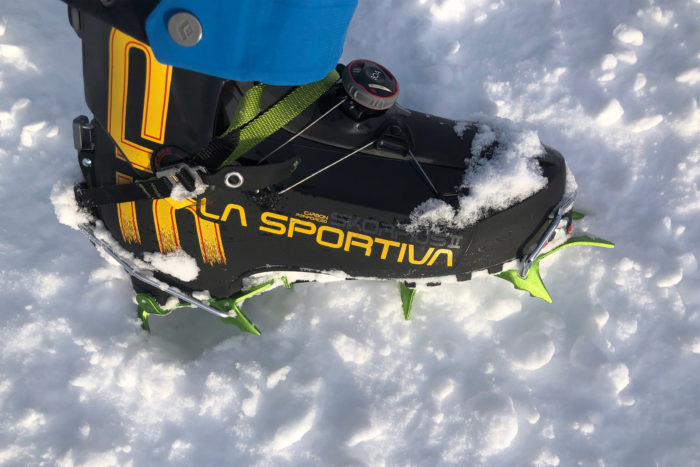
The cables are designed to facilitate a highly customized fit and are thankfully easy to adjust. I was able to swap the crampons between my La Sportiva Skorpius CR II touring boot and G5 mountaineering boot in under a minute.
One of the most understated but welcome upgrades is the heel bail adjustment knob. Man, are those things tough to tighten or loosen when they are frozen or while wearing gloves. The Neve Pro sports a more 3D-featured knob that spins exactly like you’d want it to. Why hasn’t anyone else thought of that?
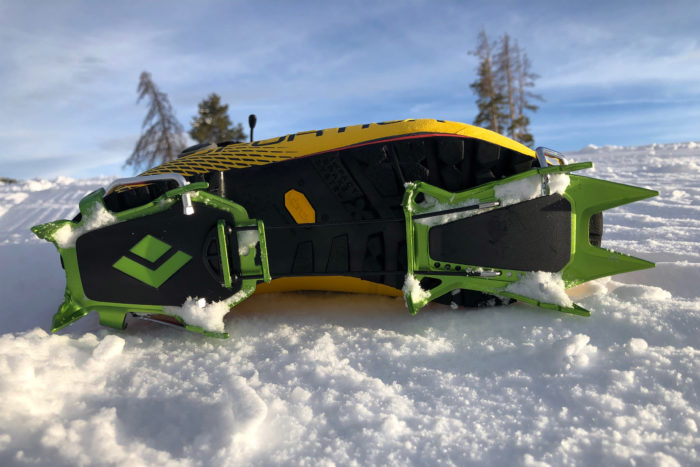
On the Feet
The Neve Pro crampons don’t bring any surprises once you clip them on and point it uphill. And that’s a good thing. They’re solid, and they function as 10-point crampons should. Solid front pointing, French stepping, German technique, and American style.
They simply perform on steep snow without fuss.
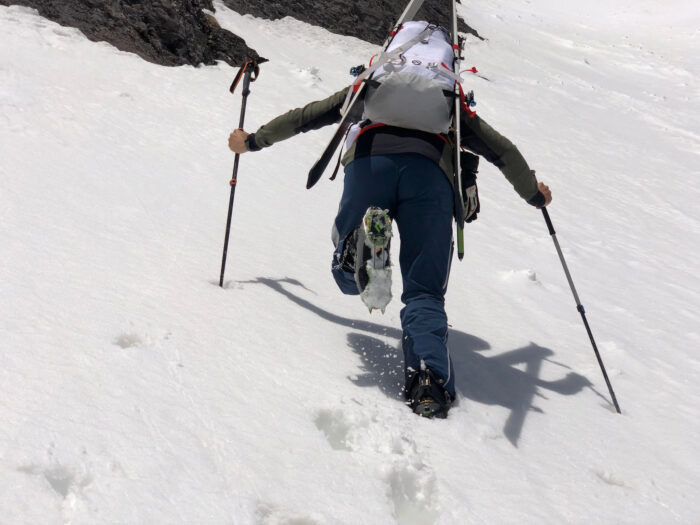
I thought the cable design would introduce a lot of flex compared to a center bar. But in practice, I didn’t find this to be the case when they are well adjusted to the boot. They have the slightest flex when balancing on the front points, but that’s to be expected with any crampon, especially aluminum ones. It wasn’t more or less than my steel Grivel G12 crampons.
Some crampons using Dyneema cord connections tend to loosen over time due to slight stretch. The Neve Pros remained locked in place once they were adjusted correctly. I can’t speak to the longevity of the steel cables — I’ll need to walk around on a lot more rocks first. Regardless, the cables appear to be easily replaceable if parts become available.
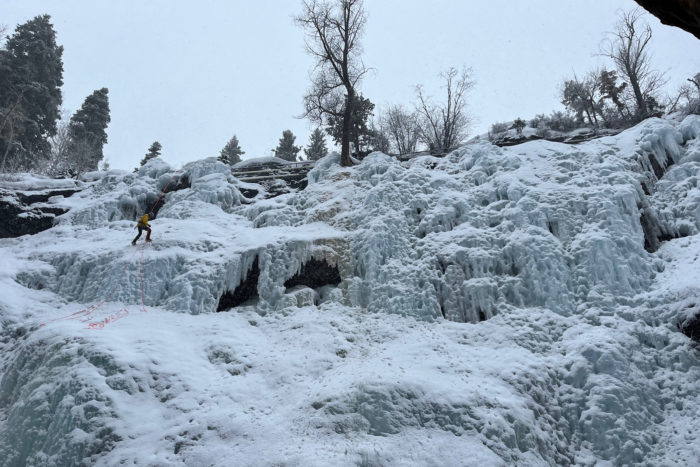
Weigh Next to Nothing
Did I mention they are light? They’re really light, 394 g per pair. I barely noticed the weight when strapped to my touring or mountaineering boots. The old Neve Pro crampon was 576 g, and those still feel light. For comparison, Black Diamond’s 10-point steel Serac Crampons weigh 905 g — more than double.
The massive weight savings over steel increases the likelihood that I’ll toss them in my pack for a ski tour that may or may not call for them. They’d be great as an emergency solution to getting stuck in an ice couloir or on a face requiring a downclimb.
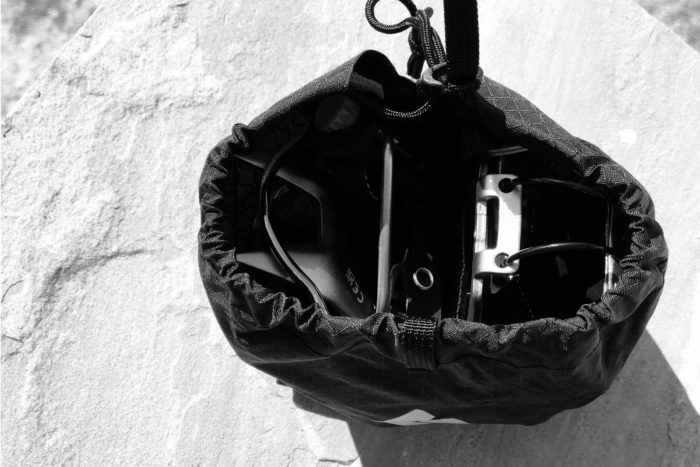
Along with the negligible weight, these crampons also fold over on themselves into a neat, compact package. The carry sack, which is typically not included with crampons, holds both crampons in the folded configuration.
Does it take up less volume than center bar crampons? I don’t think so. But the package is a different shape. Once spring arrives and ski crampons join the daily carry kit, they can wrap neatly around the folded crampons within the sack for space savings.
Black Diamond Neve Pro Crampon Conclusion
Black Diamond’s Neve Pro crampons were completely overhauled for 2023. Switching from a center bar to a twin cable system, the lime green ‘pons drop significant weight while retaining the stability and sure-footedness of their predecessor.
The aluminum won’t stand up to significant rock abuse. But at a scant 197g each, you’ll have no problem bringing them along on a ski tour for when the névé gets steep.
